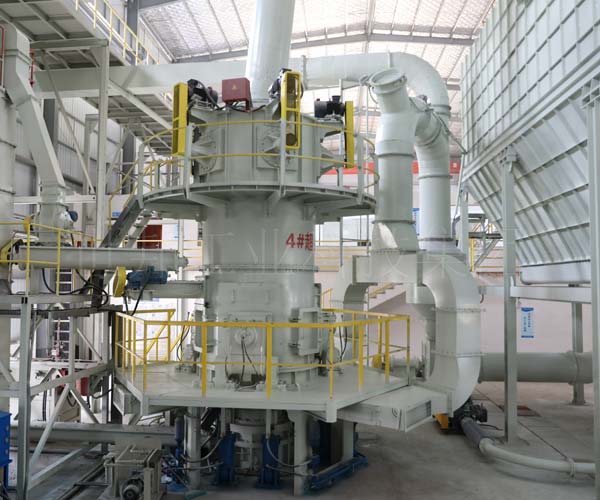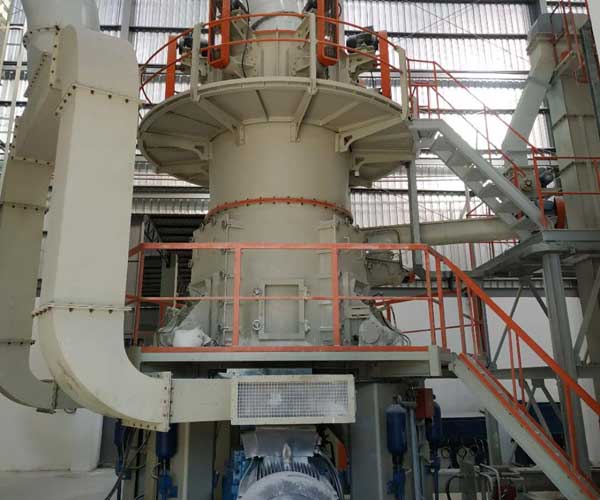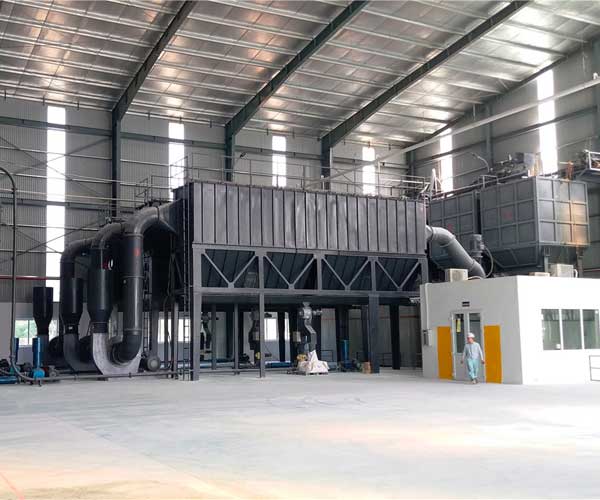
The transition from traditional powder production methods to ultra-fine grinding mills has revolutionized numerous industries by addressing the limitations of traditional processes. The improved efficiency, reduced energy consumption, enhanced product quality, and the ability to handle a wide range of materials make ultra-fine grinding mills a game-changing technology.
24 Online Service

The need for finely ground materials is pervasive in various industries, from pharmaceuticals and chemicals to minerals and food production. To meet these demands, the emergence of ultra-fine grinding mills has been nothing short of revolutionary. These sophisticated machines are designed to break down materials to an exceptionally small particle size, creating a range of powders that were once deemed unattainable.
An ultra-fine grinding mill, also known as ultra-fine grinder or ultra-fine pulverizer, is a high-precision grinding machine that specializes in producing particles of sizes below a few micrometers or even nanometers. Unlike traditional grinding mills, which typically reduce materials to micrometer-scale particles, ultra-fine grinding mills take the art of comminution to the next level by operating at an ultra-fine scale.
These mills are designed to handle a wide variety of materials, including minerals, chemicals, pharmaceuticals, food products, and more. The fundamental principle behind ultra-fine grinding mills is to crush and grind materials through intense mechanical forces, utilizing specialized grinding media to achieve particle sizes that are several orders of magnitude smaller than those attainable by traditional methods.
To understand how an ultra-fine grinding mill operates, it’s essential to grasp the basic components and their functionalities:
The heart of an ultra-fine grinding mill is its grinding chamber. It’s a confined space where the material to be ground is introduced. Inside this chamber, a set of grinding media, typically composed of ceramic beads or metallic balls, carries out the grinding process. The geometry and size of the chamber play a crucial role in determining the final particle size.
The grinding media are designed to apply mechanical forces to the material, causing it to break down into smaller particles. The choice of grinding media material and size is a critical factor that influences the efficiency and quality of the grinding process.
The impeller or rotor is a rotating component within the grinding chamber. It generates a high-speed, turbulent flow of media and material, ensuring efficient mixing and grinding. The design and speed of the impeller impact the grinding process’s effectiveness.
Many ultra-fine grinding mills incorporate a classifier, which separates the ground particles from those that need further grinding. This helps ensure that only the particles that have reached the desired size are collected, reducing the number of over-processed or under-processed materials.
Ultra-fine grinding mills are powered by various drive mechanisms, including electric motors and pneumatic systems. These drives control the rotation of the impeller and other components, ensuring the grinding process runs smoothly and efficiently.
Because the intense grinding generates heat, cooling mechanisms are essential to prevent overheating. Cooling media, such as liquid nitrogen or air, are often used to maintain the desired temperature within the grinding chamber.

The production of powders plays a pivotal role in numerous industries, ranging from pharmaceuticals and food processing to ceramics and advanced materials manufacturing. Traditionally, these powders have been manufactured through labor-intensive and energy-inefficient processes that often result in significant limitations and drawbacks.
Traditional powder production methods, such as ball milling, hammer milling, and air classification, have long been the norm. While effective to a certain extent, they come with several limitations and drawbacks:
Traditional methods struggle to achieve precise control over particle size distribution. Irregular particle sizes can lead to inconsistent product quality, as different applications often require specific particle size ranges.
Traditional methods are notorious for their high energy and resource consumption. For example, ball milling relies on mechanical energy, while hammer milling involves substantial wear and tear on equipment and requires frequent maintenance, consuming both energy and resources.
Traditional methods are often constrained in their ability to handle a wide range of materials. Delicate or heat-sensitive materials may undergo degradation during processing, reducing product quality.
Traditional methods may leave behind a significant proportion of coarse particles, necessitating multiple rounds of grinding to reach the desired fineness, further increasing energy consumption.
The emergence of ultra-fine grinding mills has revolutionized powder production, offering numerous benefits that overcome the limitations of traditional methods. Here are some of the advantages of using these advanced technologies:
Ultra-fine grinding mills are designed for precise control over particle size distribution, leading to highly consistent product quality. They are capable of producing ultra-fine powders with a narrow size distribution, eliminating the need for additional processing steps.
Unlike traditional methods that rely on mechanical forces, ultra-fine grinding mills use advanced technology such as high-speed impact and inter-particle comminution. This results in significantly reduced energy consumption, making the process more sustainable.
Ultra-fine grinding mills produce powders with improved properties, such as increased surface area and reactivity. This makes them ideal for applications where high-quality powders are essential, such as in advanced ceramics and materials science.
Ultra-fine grinding mills can handle a wide range of materials, including heat-sensitive, abrasive, and even previously challenging substances. This versatility allows industries to expand their product offerings and explore new applications.

In the ever-evolving landscape of industrial processes, the demand for higher precision, better product quality, and resource efficiency has led to the development and adoption of cutting-edge technologies. Among these, ultra-fine grinding mill technologies have emerged as a crucial driving force in industries seeking to transform and optimize their production processes.
Recent advancements in ultra-fine grinding mill technologies have expanded their capabilities and made them more efficient and user-friendly. Some notable advancements include:
The integration of ultra-fine grinding mills with nanotechnology has allowed for the production of nanoparticles with precise control over size and shape, revolutionizing industries like pharmaceuticals, electronics, and materials science.
Many ultra-fine grinding mills are now equipped with smart automation and control systems, enabling precise adjustment of parameters like grinding speed, media type, and particle size distribution, resulting in improved process consistency and reduced human intervention.
Modern ultra-fine grinding mills are designed to be more energy-efficient, with reduced power consumption and improved heat dissipation, reducing operating costs and environmental impact.
Case Study: Pharmaceutical companies have adopted ultra-fine grinding mills to produce finely milled active ingredients, improving drug efficacy and bioavailability.
Improvements: Enhanced drug solubility and quicker absorption, leading to more effective treatments and reduced dosages.
Case Study: The food industry uses ultra-fine grinding mills to create nano-sized food additives and flavors for better dispersion and taste.
Improvements: Improved flavor release, reduced clumping, and enhanced product quality.
Case Study: Mining companies utilize ultra-fine grinding mills for ore processing, resulting in higher mineral recovery and reduced waste.
Improvements: Increased mineral liberation, improved metal extraction rates, and reduced environmental impact.
Case Study: In materials science, ultra-fine grinding mills are employed to create high-quality nanoparticles with controlled properties for applications in advanced materials and coatings.
Improvements: Tailored material properties, better performance, and enhanced durability of products.
Case Study: The cosmetics industry has embraced ultra-fine grinding mills for the production of micronized pigments and fillers, resulting in smoother and more effective products.
Improvements: Enhanced skin adherence, better color dispersion, and improved product aesthetics.
Case Study: Ultra-fine grinding mills are used in agriculture to reduce the particle size of fertilizers, leading to improved nutrient uptake and crop yields.
Improvements: Increased nutrient efficiency, reduced fertilizer usage, and enhanced crop quality.
Our Projects
Copyright © ZENITH, All Right Reserved.
